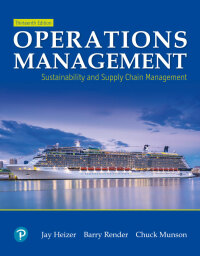2. What are the advantages and disadvantages of Frito-Lay drivers stocking their customers shelves? Frito-Lay, the multi-billion-dollar
Question:
2. What are the advantages and disadvantages of Frito-Lay drivers stocking their customers’ shelves?
Frito-Lay, the multi-billion-dollar snack food giant, produces billions of pounds of product every year at its dozens of U.S. and Canadian plants. From the farming of potatoes—in Florida, North Carolina, and Michigan—to factory and to retail stores, the ingredients and final product of Lay’s chips, for example, are inspected at least 11 times: in the field, before unloading at the plant, after washing and peeling, at the sizing station, at the fryer, after seasoning, when bagged (for weight), at carton filling, in the warehouse, and as they are placed on the store shelf by Frito-
Lay personnel. Similar inspections take place for its other famous products, including Cheetos, Fritos, Ruffles, and Tostitos.
In addition to these employee inspections, the firm uses proprietary vision systems to look for defective potato chips. Chips are pulled off the high-speed line and checked twice if the vision system senses them to be too brown.
The company follows the very strict standards of the American Institute of Baking (AIB), standards that are much tougher than those of the U.S. Food and Drug Administration. Two unannounced AIB site visits per year keep Frito-Lay’s plants on their toes. Scores, consistently in the “excellent” range, are posted, and every employee knows exactly how the plant is doing.
There are two key metrics in Frito-Lay’s continuous improvement quality program: (1) total customer complaints (measured on a complaints per million bag basis) and (2) hourly or daily statistical process control scores (for oil, moisture, seasoning, and salt content, for chip thickness, for fryer temperature, and for weight).
In the Florida plant, Angela McCormack, who holds engineering and MBA degrees, oversees a 15-member quality assurance staff. They watch all aspects of quality, including training employees on the factory floor, monitoring automated processing equipment, and developing and updating statistical process control (SPC) charts. The upper and lower control limits for one checkpoint, salt content in Lay’s chips, are 2.22% and 1.98%, respectively. To see exactly how these limits are created using SPC, watch the video that accompanies this case
Step by Step Answer:

Operations Management: Sustainability And Supply Chain Management
ISBN: 9780135225899,9780135202722
13th Edition
Authors: Jay Heizer; Barry Render; Chuck Munson






